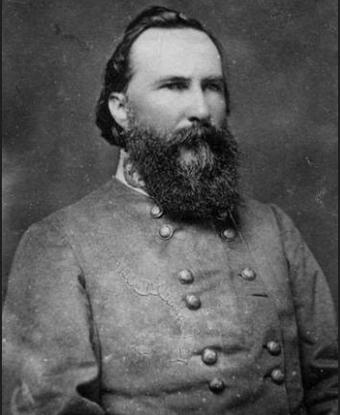Last updated: February 14, 2018
Person
James Longstreet

Library of Congress
From the Peninsula to Maryland: Longstreet's role in the summer of 1862
In the Northern Virginia Campaign of August 1862, Longstreet did not play his customary defensive role he is most well known for. At the Second Battle of Manassas (Bull Run), in fact, he did precisely the opposite. While "Stonewall" Jackson held a strong defensive line Longstreet played Jackson's usual role of maneuvering quickly in order to unexpectedly attack the Union army.
Following the successful execution of a sweeping flanking maneuver that placed his command in the rear of John Pope's Army of Virginia, Jackson took up a defensive position and effectively invited Pope to assault him. Pope obliged and beginning the evening of August 28 Pope pounded Jackson as Longstreet and the remainder of the army marched north to reach the battlefield.
Postwar criticism of Longstreet claimed that he marched his men too slowly, leaving Jackson to bear the brunt of the fighting for two days, but Longstreet's men moved very quickly covering roughly 30 miles in a little more than 24 hours, arriving on the field of the Second Battle of Manassas around midday on August 29.
Longstreet's actions after his arrival are significantly more controversial. Despite three separate suggestions from Lee urging him to attack, Longstreet demurred, recommending instead that a reconnaissance in force be conducted to survey the ground in front of him.
It was not until 6:30 p.m. on August 29 that John Hood's division moved forward against the troops of the Union V Corps, and they were forced to withdraw only two hours later.
Although this delay earned Longstreet significant criticism, his careful preparations of the afternoon of August 29 paid dividends the following morning. Longstreet's artillery proved to be of great assistance to Jackson's resistance of the Union attack that morning. Then, as Pope pushed Jackson, believing he was starting to retreat, Longstreet capitalized on Federal confusion and launched his own attack on the Union army's left flank with over 28,000 men, anticipating an order from Lee that had not yet arrived. This attack is regarded as "the largest, simultaneous mass assault of the war," and changed the tide of battle.
Longstreet's success on the fields of Manassas established a strategic model he believed to be ideal--the use of defensive tactics within a strategic offensive. He would advocate similar strategy for the remainder of the war.
The Maryland Campaign proved to be a further testing ground of such tactics for Longstreet. His first success came in his orchestration of the delaying action at South Mountain on September 14, which allowed the majority of Jackson's men time to arrive on the field north of Sharpsburg where Longstreet's command joined them after pulling back from South Mountain.
At the Battle of Antietam on September 17 Longstreet used the terrain to his advantage and held his part of the Confederate defensive line against Union forces nearly twice as numerous, further validating his idea that the tactical defense was now vastly superior to the exposed offense.
On October 9, Longstreet was promoted to Lieutenant General one day earlier than Jackson, making the "Old War-Horse" the senior Lieutenant General in the entire Confederate Army.
Longstreet Goes West
His troops boosted Confederate numbers to give the rebels a rare numerical advantage. Rumors quickly swirled through Union ranks about Longstreet's presence, and both Union soldiers, and Confederates from the Army of Tennessee, marveled at the soldierly appearance of Longstreet's men. By nightfall on September 19, 1863, Longstreet was on the field, and Confederate General Braxton Bragg reorganized the army, giving Longstreet command of an entire wing of his army. In confusion of the wooded battlefield, the dawn attack never materialized on the morning of September 20. Finally, at around 11 am, Longstreet ordered his wing forward towards the center of the Union line. Longstreet's command split the Union Army, and effectively routed the Army of the Cumberland.
Moving towards Chattanooga, Longstreet's men took up positions around Lookout Mountain. From this vantage point, James Longstreet helped plan the Battle of Wauhatchie, which resulted in Confederate defeat in Lookout Valley and opened a vital Union Army supply route known as the Cracker Line. Frustrated by the leadership of Braxton Bragg, Longstreet was ordered to Knoxville, where he engaged with Union forces, before returning to Virginia in the spring of 1864.
